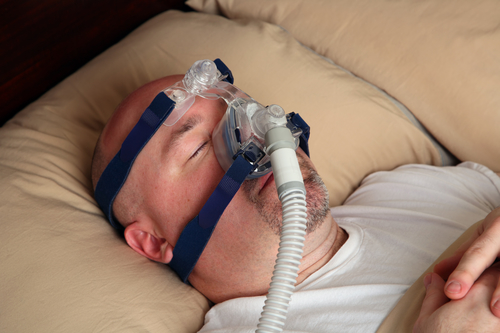In the early 80s two trials provided scientific evidence, that the use of long-term oxygen therapy used for at least 15 to 18 hours per day improves survival in patients with chronic obstructive pulmonary disease (COPD). We currently use a similar LTOT schedule in patients with COPD with severe chronic daytime hypoxemia documented by arterial blood gas measurement. This position is acceptable and is widely used from all the COPD-based guidelines. The effectiveness of nocturnal oxygen in patients not qualifying for long-term oxygen therapy remains controversial. Interestingly, all the involved trials were considered as underpowered ones. The current study aimed to determine in patients with COPD with nocturnal arterial oxygen desaturation who do not qualify for long-term oxygen therapy because of the absence of severe daytime hypoxemia, whether nocturnal oxygen provided for a period of 3 to 4 years affects mortality or the progression of COPD such that patients meet current specifications for long-term oxygen therapy. Secondary objectives were to examine whether nocturnal oxygen changes disease-specific quality of life or modifies exacerbation and hospitalization rates. The trial was a randomized one. Patients with an oxygen saturation <90% for at least 30% of the recording time on nocturnal oximetry were assigned, in a 1:1 ratio, to receive either nocturnal oxygen or ambient air from a sham concentrator (placebo). The primary outcome was a composite of death from any cause or a requirement for long-term oxygen therapy as defined by the Nocturnal Oxygen Therapy Trial (NOTT) criteria in the intention-to-treat population.
243 patients were enrolled; 123 were randomly assigned to receive nocturnal oxygen and 120 to receive placebo. The trilal is an underpowered trial. This was due to the recruitment schedule which was stopped prematurely because of recruitment and retention difficulties after 243 patients, of a projected 600, had undergone randomization at 28 centers. At 3 years of follow-up, 39.0% of the patients assigned to nocturnal oxygen (48 of 123) and 42.0% of those assigned to placebo (50 of 119) met the NOTT-defined criteria for long-term oxygen therapy or had died (difference, −3.0 percentage points; 95% confidence interval, −15.1 to 9.1). At 3 years and 4 years of follow-up, the absolute differences between the two trial groups in the percentage of patients with a primary outcome event, the separate component of death, or the separate component of a requirement for long-term oxygen therapy were all no more than 6.5 percentage points. Regarding the secondary outcomes no significant differences were observed.
###Comment:
We consider the trial as a negative one. The main arising question is whether we need a powered trial or we have to confess that nocturnal oxygen does not represent an effective treatment option in those patients with preserved ABGs at daytime.





